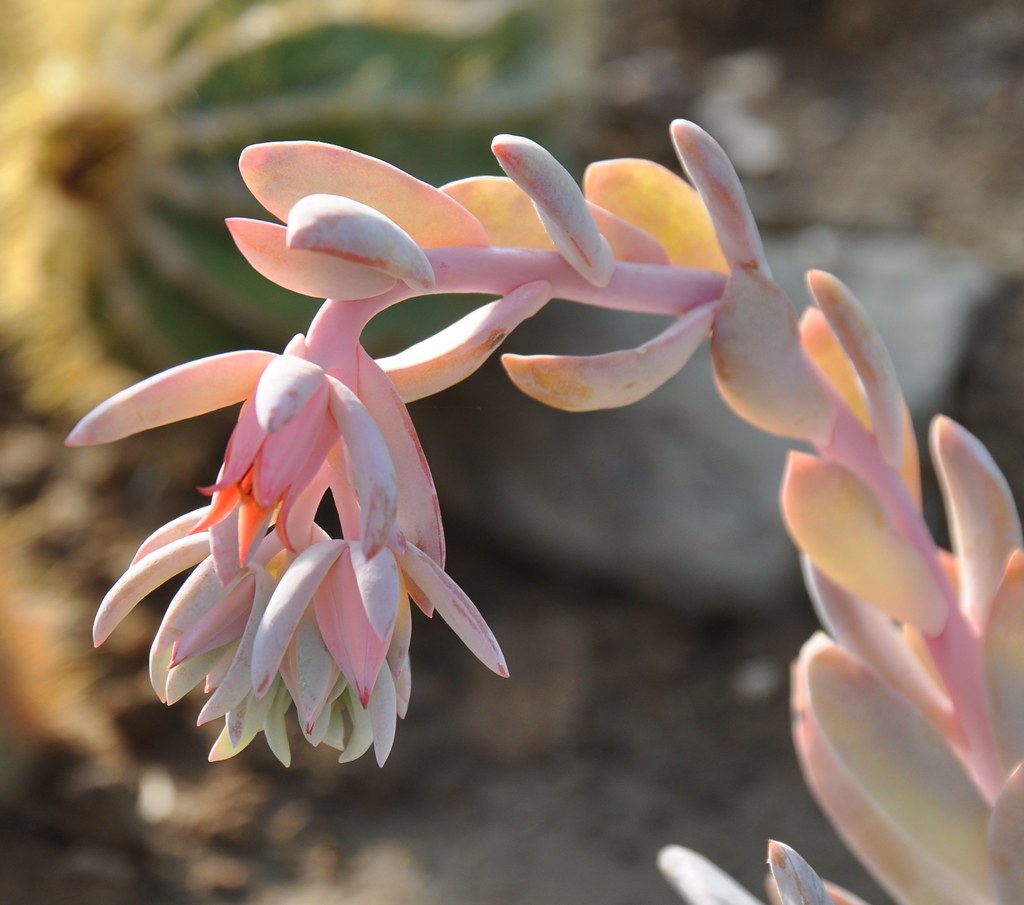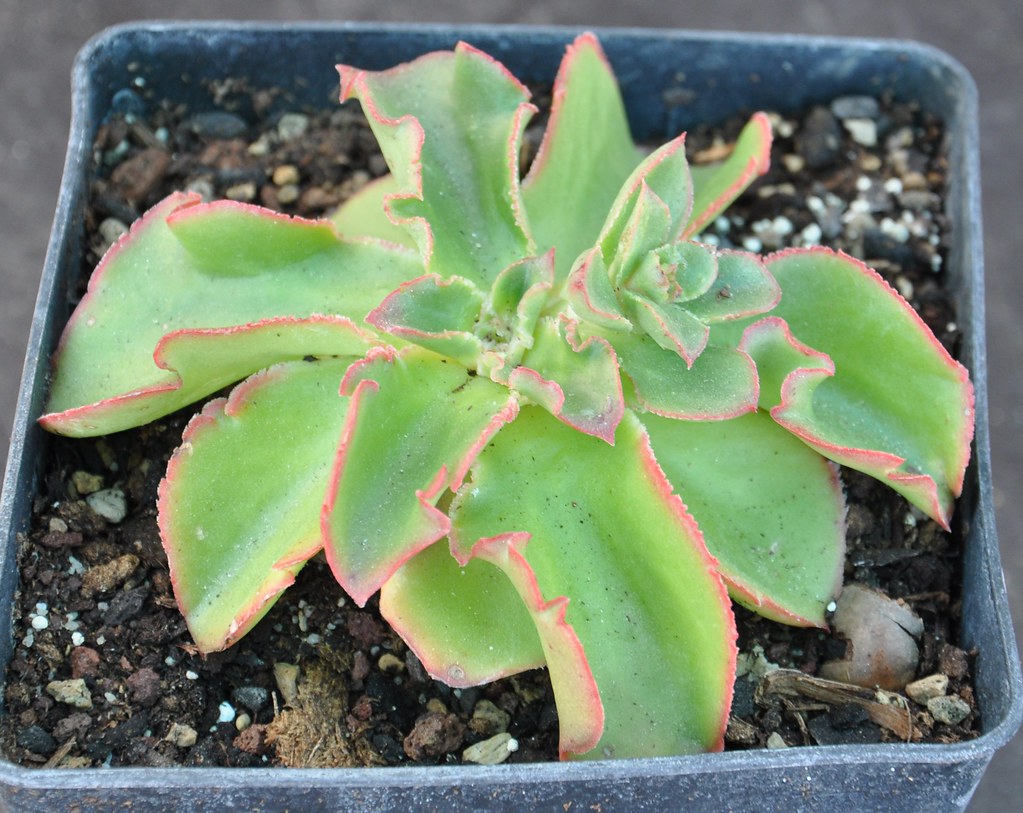Pin em Succulent

Salma Alves on Instagram “Echeveria Volcan Doux 🧡” Echeveria
Dig a shallow hole in well-draining soil that in a container that features a drainage hole or in the ground. Wet the soil. Place the plant in the hole container or ground and gently cover the roots with soil. Make sure that the roots aren't buried too deep. Echeveria elegans.

Echeveria Mexican Giant Echeveria, Succulents, Plants
Step 3. Position in hole and backfill with soil, gently firming down. Form a raised or doughnut shaped ring of soil around the outer edge of the plant's root zone. This helps keep water where it's needed. Always water in well after planting to settle the soil around the roots and keep the soil moist for several weeks while the new plant.

Echeveria raindrops hacmaui
Painted Echeveria Echeveria nodulosa. Size: 3 to 4 inches tall and 5 inches in diameter; clumps to 1 to 2 feet tall and 2 to 3 feet wide. Color: Pale blue-green and burgundy-red foliage, green flower stems and bracts, coral pink and yellow flowers. Named for its foliage that appears to be painted. Vigorous rosettes produce a profusion of offsets.

Echeveria volcan doux M sem raiz Jardim da Mari
Succulents tend to grow toward the light source. So to keep your Echeveria symmetrical, it is recommended to turn the pot at least once or twice a week. If your Echeveria begins to stretch, just continue growing it, then start fresh in the Spring by simply cutting the top and rooting it as a new rosette. 2. Watering.
Echeveria Doux Moments
The Best Echeveria Types to Grow. 1. Topsy Turvy Echeveria. Popular for its unique spoon-shaped, blue-green leaves with a touch of silver hue. This fast-growing succulent does well only in a warm climate. 2. Blue Frills Echeveria. The blue-green leaves of this Echeveria have ruffled edges, with symmetrical coral margins.

Echeveria culture, variétés, plantation et conseils d'entretien
Mist the soil, and cover the pot until the new plant sprouts. Place it in a sunny location—but avoid direct sunlight. Once roots have developed (you will see new growth), water sparingly as you would with a mature succulent. After about a month, a tiny rosette will begin to develop at the end of the leaf.

ECHEVERIA VOCAN DOUX (PT 11CM) Suculove Bycici
Your pollinated echeveria flower will need to look thoroughly spent and have dried out completely before removing the flower collecting the seed. Using a white piece of paper, gently remove the flower petals and sepals and rub the seeds onto the paper, they will be very tiny so the white paper is a must.

Echeveria Afterglow Echeveria, Echeveria afterglow, Succulents
Fast and Free Shipping On Many Items You Love On eBay. Looking For Echeveria? We Have Almost Everything On eBay.

Echeveria_Patina_2 Echeveria 'Patina' dans la serre publiq… Flickr
Description. Echeveria 'Exotic' is an unusual succulent that forms compact rosettes of thick, fleshy, pale blue-green leaves heavily covered with a fine white powder. The rosettes grow up to 4.8 inches (12 cm) in diameter, producing offsets to form a dense clump. Under the stress of cool weather or intense sun, the leaf edges show pink hues.

L'echeveria plante succulente de climat doux Truffaut YouTube
Echeveria is a genus of succulent plants native to semi-desert areas of Central America. The leaves are often rosette-shaped and grow up to 20 cm (8 in) long. The flowers are borne on erect, unbranched stems and are usually pink or white. Echeveria can be propagated by seeds, offsets, or leaf cuttings.

Volcan Doux Comprar em Suculentas Nani Suculentas
To grow indoors year-round, echeveria requires bright light, preferably with direct sunlight in the morning - a south- or west-facing window is perfect. In spring and summer they do best with eight to 12 hours of light, and in winter six hours of bright light is required to keep their rosettes compact.

Echeveria_fulgens_obtusifolia_1 Jeune plant d'Echeveria fu… Flickr
Echeveria species, hailing from the semi-desert regions of Central America, Mexico, and Northwestern South America, offer a stunning array of over 150 cultivated varieties of succulents, each with its unique appeal. Succulent enthusiasts are drawn to these plants for their mesmerizing colors and captivating variations, with many.

Pin em Succulent
Echeveria munizii, a new species from the southwestern slopes of Volcán de Colima on the Colima-Jalisco border in western Mexico is described and illustrated. This species belongs to series Gibbiflorae and is most similar to E. fulgens from which it differs in having adaxially sulcate leaves with straight and hyaline margins, olive green to brownish green surface, a fewer flowered.

Photo of the entire plant of Echeveria Grotto' posted by
How to care for echeveria plants: For echeverias to thrive, grow in bright indirect light and plant in well-draining cactus/succulents potting soil. Only water when the topsoil is completely dry and keep around 40% - 50% humidity. The ideal temperature range is between 65 and 80°F (18 - 27°C).

Echeveria nodulosa Mick's Succulents Echeveria, Cactus and
HOJE VAMOS CONHECER A INCRIVEL SUCULENTA VOLCAN DOUX.#cactos #suculentas #suculentaspendentes #cactus

Pin on Succulents
echeveria, (genus Echeveria ), genus of about 150 species of succulent plants in the stonecrop family ( Crassulaceae ), native from Texas to Argentina. Many are popularly called hen-and-chicks because of the way new plantlets, or offsets, develop in a cluster around the parent plant. The usually broad fleshy leaves have waxy, velvety, or.